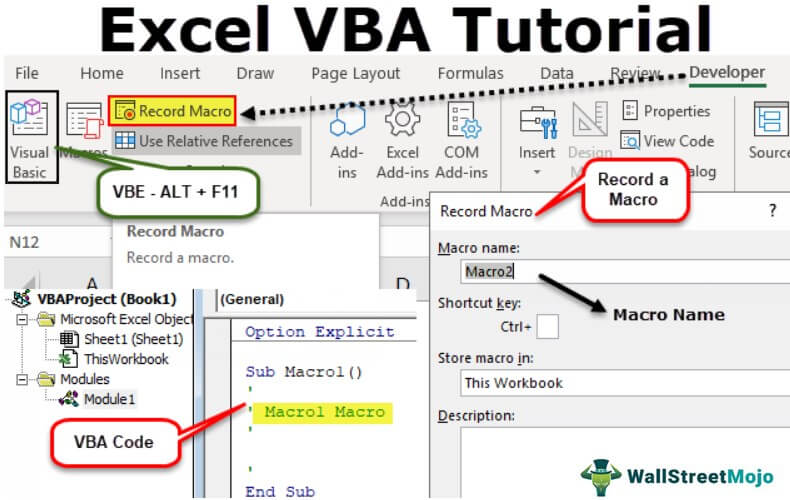


Pressing Alt + F11 switches between Excel and the Visual Basic Editor. VBA Editor: This is where we write our code. There is no limit(within reason) to the number of modules in a workbook or the number of subs in a module. A module contains subs which in turn contain lines of code. Module: A module is simply a container for our subs. A macro and a sub are essentially the same thing.
Excel vba code#
When we “Run” the sub, VBA goes through all the lines of code and carries out the appropriate actions. Sub: A sub is made up of one or more lines of code. Generally speaking, they perform one task. It is short for Visual Basic for Applications. VBA: VBA is the programming language we use to create macros.

Copy values between difference worksheets.Copy values from one range of cells to another.Copy the value from one cell to another.Understand the difference between a module and sub.When you finish this VBA tutorial you will be able to: 15 Conclusion of the VBA Tutorial Part One.12.3 Writing between variables and cells.11 Copying values between multiple cells.3 Basic Terms Used in this VBA Tutorial.2 The Six Killer Tips For This VBA Tutorial.1 Learning Outcomes for this VBA Tutorial.If you want to make sure that the macro only stuffs information into B5 if only B5 (the single cell) is selected, you can use this version of the macro: The macro then checks to see if the target range contains cell B5, and if it does, stuffs the value 10 into cell B5. When the SelectionChange event is triggered, the target (the cell range being selected) is passed to the handler. Double-click the worksheet you want the event handler to apply to, and then add the macro to the resulting code window. This code is added to one of the sheet objects in the Project Explorer area of the VB Editor. If Not Intersect(Target, Range("B5")) Is Nothing Then _ Private Sub Worksheet_SelectionChange(ByVal Target As Range) To implement that, you could use the following: The event doesn't just trigger when a cell is clicked on, but also if someone presses a cursor control key that results in a different cell being selected.Īs an example, let's say that you wanted cell B5 to contain the value 10 whenever that cell is selected. Every time the selection changes in the worksheet, the event is triggered. The standard way to do this is with the SelectionChange event. He wants a value inserted in a cell when that cell is clicked on. Supriyo asked if there is a mouse event handler in VBA.


 0 kommentar(er)
0 kommentar(er)
